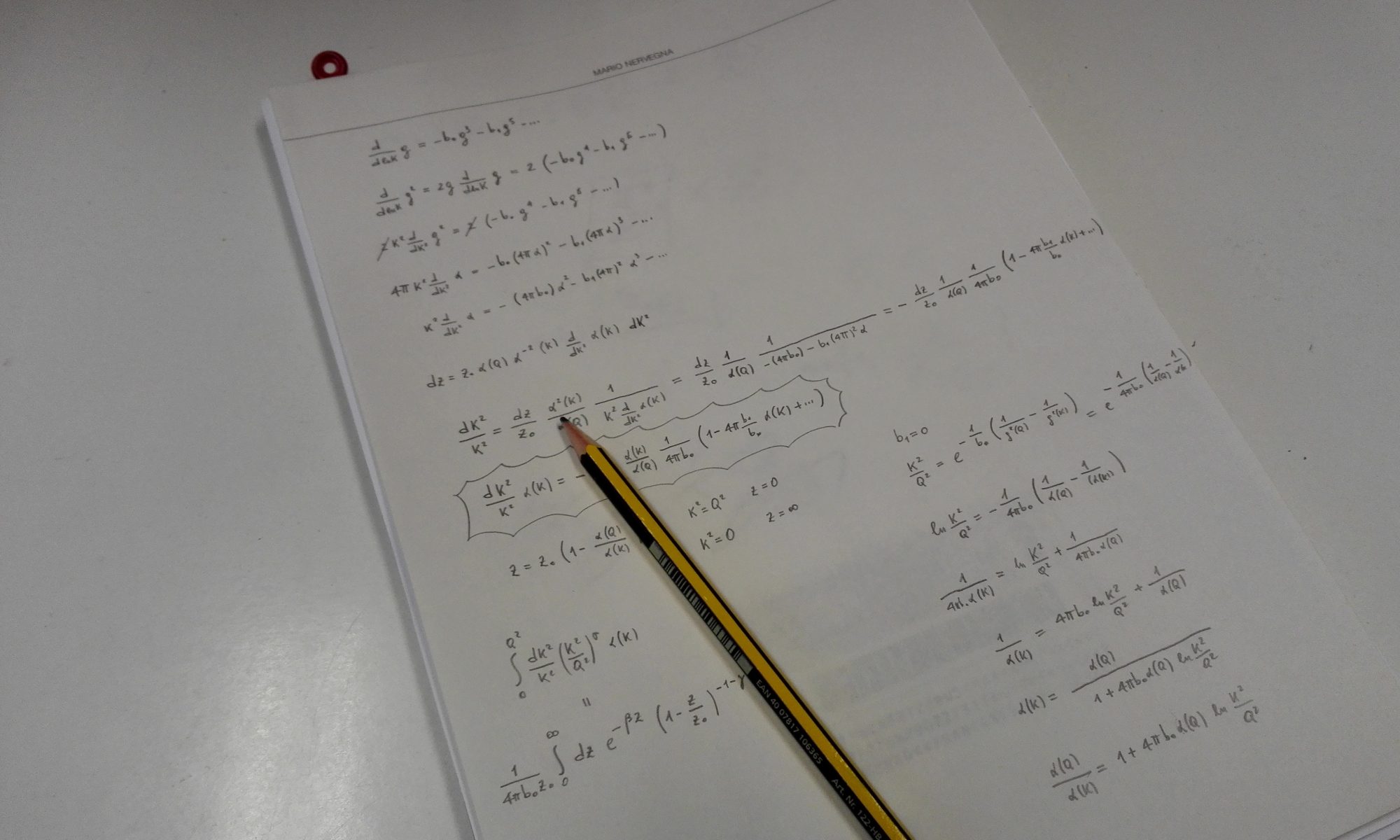The Higgs boson: elementary or composite?
Is the Higgs boson an elementary particle? A conversation with
Alessandro Lupo (EuroPLEx fellow, University of Edinburgh)
You may think that the best way for a physicist to describe their work is to peek into one of our usual working days through laboratories equations and computers, to see what happens, how we do what we do, and perhaps why. 
[photo: wikipedia]
But maybe, the quickest way into the life of a researcher is simpler than that. Maybe it is as simple as a walk in a park on a summer day, when you are explaining to someone curious enough what it is that you are trying to find in all those numbers. And this is possible because all the maths that a lot of people fear, despite being a valuable ally in our search for the truth, is not necessary to tell our story which, I am sure, is accessible to everyone.
Q: So what is your research about?
A: I work on models in which the Higgs boson, a particle discovered in 2012, is not fundamental but it is composed by other, smaller particles.
Q: What do you mean by “models”?
A: A model is a way in which we think Nature may behave. It is like a picture of it, but instead of colours we have equations. Nature can be different in different “models” as a tree can look different in different pictures. In one, a certain particle can be fundamental, in other it may be composed by smaller particles. So far we haven’t found anything inside the Higgs boson, but there are strong hints suggesting that we should have a better look.
Q: Wait, you keep saying that a particle can be “fundamental”, but what does it mean?
A: It means there is is nothing inside. A lot of things we know are composite, which means they are made by smaller objects. Molecules are made of atoms. Inside an atom we find electrons and nucleons. Nucleons are made of quarks. For this reason molecules, atoms and nucleons are all composite objects. The electron, on the other hand, seems to be just itself. It is just a point, with nothing inside.
Q: What do you mean by… a point? And how can you be sure that there is nothing inside?
A: A point means it has no spacial dimensions. It has no radius, no shape, just a point. It is a kind of idealisation and we cannot vouch for its practical nature, but it is a helpful concept when we try do describe certain particles. As we develop better technologies we are able to look at smaller and smaller distances. For example, we looked at the electron and we did not find anything inside, nor we could see that it has some spatial extension. It just looked like a point. Similarly, stars look like dots in the sky but they are actually gigantic. Today we can take a closer look and the electron still behaves like it is fundamental. Therefore we say that it is a point. Maybe one day we will find out it is actually composite, but so far we are happy with our answer. Science doesn’t deal with definitive answers (or at least not always) as far as they are consistent with the information that is given to us from the experiments.
Q: So you try to understand if a particle is composite or not?
A: Yes, and that particle is the Higgs boson. A lot of clues suggest it is probably made by other particles. We do not know these particles or the force that binds them together, so if it is true, there is a new thing to discover there. So far we know four forces: gravitational, electromagnetic, strong nuclear force and weak nuclear force. None of them can keep these hypothetical particles inside the Higgs boson, so there must be something else, which is very exciting.
Q: But practically, how can you do these things?
A: As a theorist, with maths and a lot of computer simulations. We do not know the nature of the hypothetical particles inside the Higgs boson. We don’t know how heavy they are, how they interact with themselves or with ordinary particles. In this dark room, maths can be a useful light as our calculations can rule out many possibilities. For example, we may wonder if some kinds of particles can be the constituent of the Higgs boson: we solve a couple of equations and we find out that with that choice, the matter we are made of would be unstable! Which is definitely not true, since we exist. Therefore we can rule out that choice and try with another one. Computer simulations are very necessary in this game. To solve the puzzle inside the Higgs boson we need to perform billions and billions of calculations. This takes hours for a computer, while for us, a lifetime would not be enough.
Q: And what would that imply, if you find out that the Higgs boson is actually composite? Would there be any practical implications?
A: It would be a big step towards the understanding of the universe we live in. To get something practical out of it, it is not what happens at this point of the assembly line. We are at the beginning of it, where new things are discovered. These things go down to the assembly line and eventually other people will find applications for them. This is what usually happens. For example, when quantum mechanics was discovered nobody knew all the developments that it would have brought in our everyday life, yet most of the technology we use today relies on it! It is really worth keeping our eyes open.
Original story translated with permission from Investigación y Ciencia.

